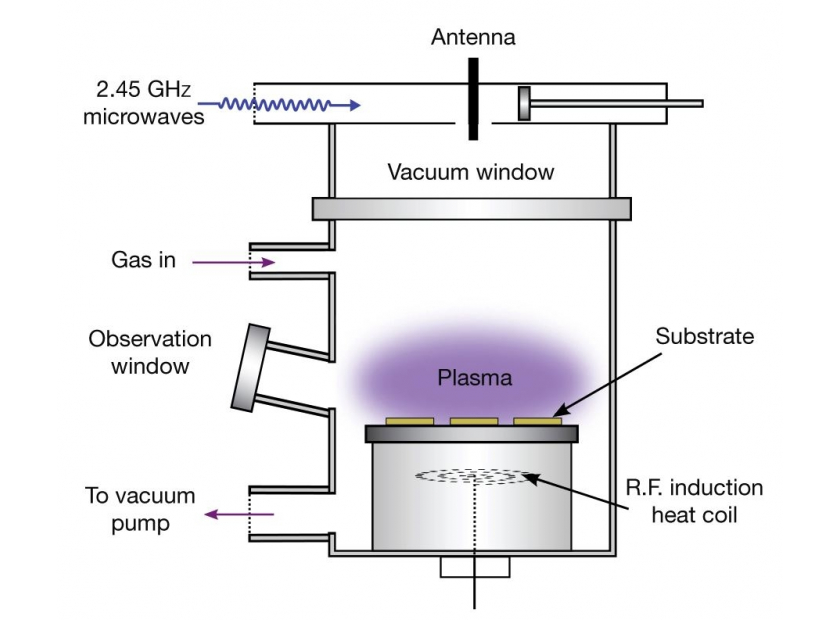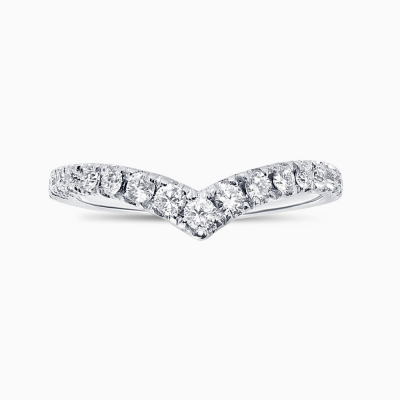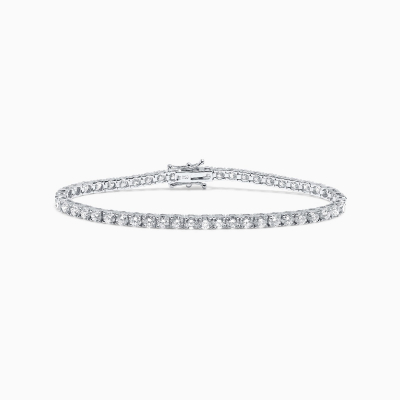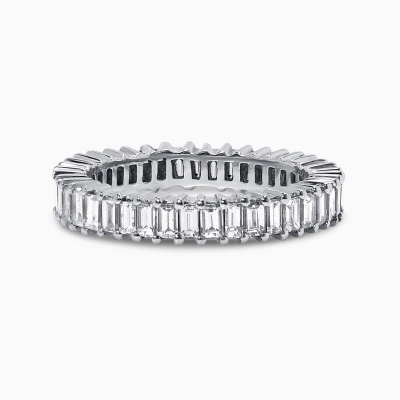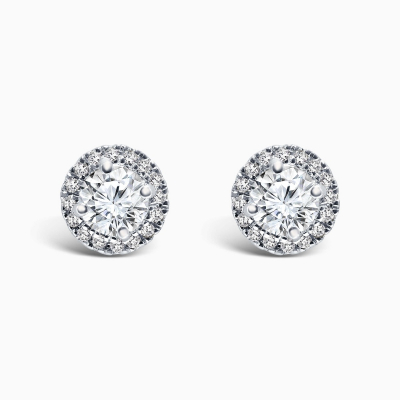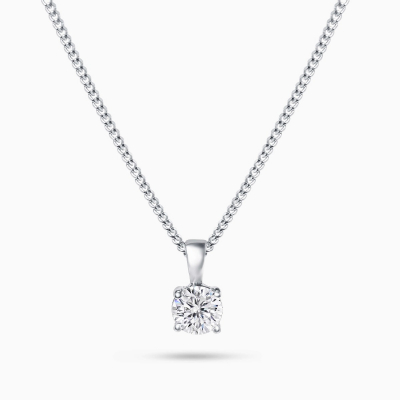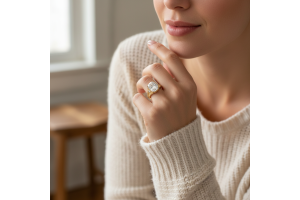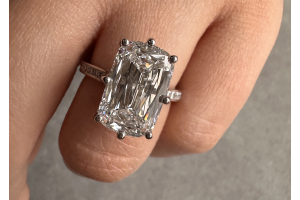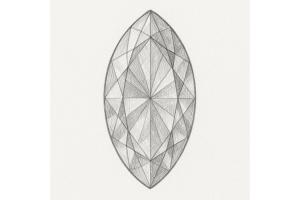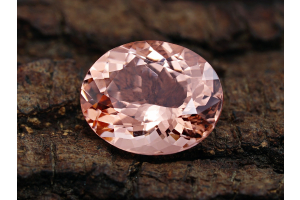GBP
/
GBP
/
Shipping to:
Currency:
What are the Differences Between Natural And Lab-grown Diamonds?
If you have been considering buying a piece of diamond jewellery, perhaps an Lab grown engagement ring or a pair of diamond earrings, you will no doubt have been doing your homework on the world of diamonds. So you may well have come across the term ‘lab grown diamonds’ or seen information upon the comparison between lab-grown diamonds and naturally formed diamonds.
Some sources may refer to lab-grown diamonds as being ‘fake’, ‘imitation’ or a ‘simulant’, but this is actually incorrect. The reason for this common misunderstanding is that the vast majority of lab-grown diamonds are chemically and physically the same as a natural diamond that is produced by the geological processes of time and Mother Nature. In comparison moissanite and cubic zirconia which to the untrained naked eye both look similar to diamonds, in fact exhibit very different chemical and physical properties, and therefore are in fact imitation or simulant diamonds. Here at Reve Diamonds we like all our valued customers to be equipped with the right knowledge that allows them to make the right purchasing decision based on the correct facts about diamonds. So here is our short guide to the similarities and differences between naturally formed diamonds lab grown diamonds and imitation diamonds such as cubic zirconia and moissanite that we hope will help you be well informed.
How are natural diamonds made and how are lab-grown diamonds created?
Very simply a natural (or organic) diamond is formed at high temperatures and pressures at depths of 140 to 190 kilometres (87 to 118 mi) in the Earth’s mantle. Carbon-containing minerals provide the carbon source and the carbon atoms are arranged in a variation of the face-centred cubic crystal structure called a diamond lattice. The growth of a diamond occurs over periods from 1 billion to 3.3 billion years (25% to 75% of the age of the Earth). They are delivered to Earth’s surface by deep-volcanic eruptions by magma, which cools into igneous rocks known as kimberlites and lamproites which are sought after by diamond prospectors. Not all diamonds are created equally due to the extremely rigid lattice of the diamond formation meaning that it can be contaminated by a small number of impurities, such as boron and nitrogen that mix within the carbon structure. Small amounts of defects or impurities (about one per million of lattice atoms) give the diamond its colour i.e. blue (boron), yellow (nitrogen), brown (lattice defects), green (radiation exposure), purple, pink, orange or red.
Lab-created diamonds are grown in highly-controlled laboratory conditions that reproduce the Earth’s natural growing environment: high pressure and high temperature. These man-made diamonds have essentially the same chemical composition, crystal structure, optical and physical properties of diamonds found in nature. They aren’t technically “synthetic diamonds” since their chemical composition is that of naturally occurring diamonds; and they usually exhibit the same fire, scintillation and sparkle as organic diamonds. Lab-grown diamonds are categorized as either high-pressure, high-temperature (HPHT) or chemical vapor deposition (CVD) diamonds, depending on the method of their production. Lab-grown diamonds (which are also referred to as cultured or engineered diamonds) are, as their name suggests, grown in highly controlled laboratory environments and take approximately 6 to 10 weeks to develop. Technologically advanced and controlled processes replicate the conditions that natural diamonds develop within when they form in the Earth’s mantle of either extreme pressure and heat or a special deposition process. These lab-gown diamonds are formed from tiny carbon seeds of pre-existing diamonds arranged in the characteristic diamond crystal structure. As they are formed of the same material as natural diamonds, they therefore show the same chemical and optical properties.
Lab-grown fancy coloured diamonds are formed when small amounts of specific trace elements are present during the growth phase of the diamond as with natural fancy coloured diamonds. In both white and fancy coloured lab-grown diamonds, the exact composition of trace elements may differ from their natural diamond counterparts. Lab diamonds can only be distinguished from natural diamonds using specialized equipment that can detect the minor differences in trace elements and crystal growth. Unless you are a trained expert gemologist you will not find any visible differences between natural and lab-grown diamonds.
Explore Our Collections
Are the flaws/inclusions in lab-grown diamonds the same as those in natural diamonds and are they graded in the same way
Both lab-grown and natural diamonds will generally exhibit flaws or inclusions that will affect their clarity. Every certified diamond gets assigned a clarity grade by the GIA or the AGS and these grading indicate how large and noticeable that particular diamond’s inclusions are. It should however be noted that the scale used to grade clarity in lab-grown ‘v’ naturally formed diamonds is a different. As lab-grown diamonds are cultured in a molten metal solution as a result they will have metallic inclusions which can usually only be identified with 10x magnification so are not visible to the naked eye. These metallic inclusions do not occur in naturally formed diamonds. Natural diamonds contain inclusions like crystals, feathers, clouds and pinpoints which are caused by violent volcanic eruptions and all kinds of elements as they rise towards the surface of the Earth. Only the rarest diamonds emerge with no inclusions in perfect condition.
The grading system used for lab-grown and natural diamonds is different. The GIA does not grade lab-grown diamonds in the same way that it grades natural diamonds. The GIA issues a ‘Synthetic Diamond Grading Report’ for all lab-grown diamonds, which is quite different from the standard grading report. As previously mentioned, lab-grown diamonds display visual characteristics such as colour zoning, metallic inclusions, weak strain patterns, and colours of ultraviolet fluorescence to differentiate them from natural diamonds and so the Synthetic Diamond Grading Report offers a more general description of colour and clarity. After a lab-grown diamond is graded, the diamond’s girdle is laser-inscribed with its report number and a given statement that the stone is laboratory grown.
So which diamond offers the better value natural or lab-grown diamonds?
Many retailers of lab-grown diamonds claim that these diamonds cost approximately 30% less than natural diamonds of a comparable quality and size. However, inventories of lab-grown diamonds are often quite limited compared to natural diamond inventories, therefore making your choice of the perfect diamond more limited. When you consider that many more natural resources and work go into delivering a natural diamond to the jewellers shop than the lab-grown diamond, this is not a surprising figure. However what must be borne in mind is that lab-grown diamonds have no resale value whilst natural diamonds at the very least retain their value, and in some cases show an increase, and can be sold on at a later date if desired.
What are imitation or simulant diamonds such as Moissanite& Cubic Zirconia?
Natural Moissanite originally came from space and was created by a meteorite that fell to Earth being composed of crystals of silicon carbide. Natural Moissanite is incredibly rare, so Moissanite is now created in the laboratory-created and engineered to look similar to a natural diamond, but is physically quite different from an organic diamond. Cubic Zirconia (also commonly referred to as CZ) was first created in a laboratory in 1976. It was made to offer a low cost alternative to natural diamonds that is durable but with a similar sparkle to that of a natural diamond.
Cubic zirconia is a synthesized (man-made) crystalline diamond simulant mineral that is colourless, hard, and flawless. Both of these diamond simulants are not made of carbon crystals, and therefore do not have the same brilliance as diamonds and for that reason, simulants sell at much lower prices than lab-grown diamonds. Whilst naturally formed and lab-grown diamonds are chemically exactly the same, their qualities and brilliance is judged somewhat differently by diamond experts. Natural diamonds were formed in nature between 1 billion to 3.3 billion years ago and this reason alone makes them a very valuable commodity as they are artefacts of our relationship with the Earth on which we live. The symbolism behind that and how many years natural diamonds have been in formation, for many people makes them the only choice for a jewellery item that is to be given in love and cherished for many years to come.



